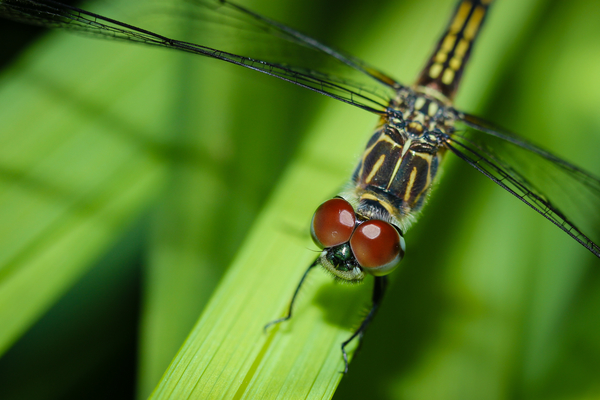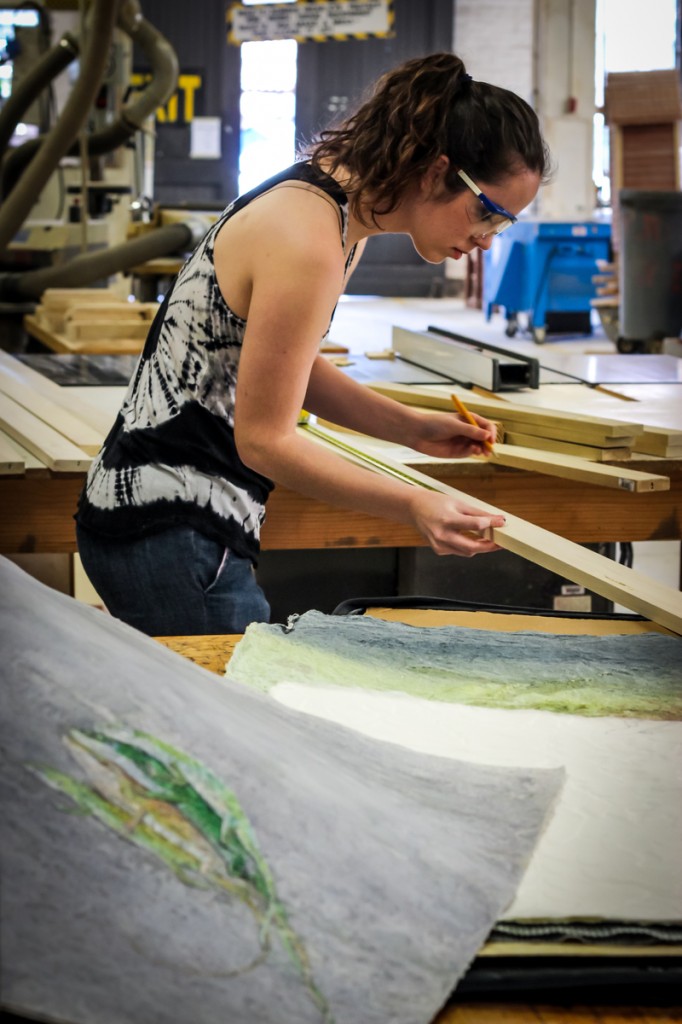Blending Art and Science
 “If [stories] have good art, they get picked up even if they’re kind of light and fluffy, it doesn’t matter. Good art is driving the bus now.” – University Science Communicator
“If [stories] have good art, they get picked up even if they’re kind of light and fluffy, it doesn’t matter. Good art is driving the bus now.” – University Science Communicator
When it comes to science communication, eye-catching visual content can be as important as a capturing lead or headline. Alex Wild, an Illinois-based entomologist and Scientific American blogger, inspires a wonder of the insect world, and the science behind insect morphology and behavior, through his breathtaking macro photography.
“On the most basic level, people are more likely to see an image than they are to read a story. Images are easier to process than text,” Wild said. “People are more likely to click through to stories when they are advertised with images, and they are more likely to read stories with clearer, stronger images attached. In this sense, using images is just smart marketing.”
The need for visual content has driven my own pursuits in science photography, as I’ve increasingly sought better quality images to complement what I write about, without relying on the often limited Creative Commons visuals obtainable on the net. This way, if I go into the field or interview a scientist for a story, I have my own pictures to go along with my written content, as in a recent article I wrote for Forbes blogs.
But the appeal of art goes beyond the initial click.
“There's the brevity of explanation,” Wild said. “I can write two paragraphs describing the behavior of particular ants, or I can photograph or video the behavior. Visual media is faster, more direct, more information rich. Plus, visuals are easier for both me to make and the reader to digest.”
Art and science collaborations are increasingly being promoted as a means of bringing together scientists and artists to better communicate science and technology to lay audiences. Some artists are being inspired by science and environmental issues to communicate these through visual media.
“In my opinion, one of the most significant roles that the creation and viewing of art plays within any society is to help us digest and understand complex or conceptually challenging ideas, happening and information by saying those complicated things in a simple way,” says Jim Osborne, a documentary photographer in Louisiana.
Osborne has been documenting old military fortifications in coastal Louisiana over the years through documentary-style photography, in order to show the effects of land subsidence and sea level rise on these important historical sites. For example, as late as the middle to late 1970s, visitors could drive to Fort Proctor, a ruined 19th century fort in St. Bernard Parish, Louisiana. Today, the fort is only accessible via water. This is very vivid and visual evidence of global rises in sea level attributed to melting icecaps and rising sea temperatures. While the dynamics of global climate change may be hard for the lay reader without a scientific background to relate to, images of once-mighty coastal forts now inundated with water tell a simple story of complex science.
The separation of art and science in the human brain seems to be a popular belief, that you are either scientifically minded or artistically minded, but rarely both. But both historical evidence and scientific studies show otherwise. From Galilei to Newton and Faraday, famous scientists have also been poets, artists and writers of fiction. Albert Einstein himself said, “[t]he greatest scientists are artists as well.” Scholarly research has even shown Nobel laureates to be more likely to pursue artistic endeavors than the “average" scientist.
The fact is artists and scientists are more alike than typically portrayed. Both share an irresistible drive to describe and interpret our experiences, motivated frequently by, as [Jacobus Hernicus] van't Hoff put it, “the pursuit of an idea which exists only in the mind…and represents the result of imagination." The artist turns passionate explorations of the wonderful into works of art, and the scientist translates them into words and equations; but what drives innovation in science is inseparable from the elemental urge to express ourselves artistically. - Integrating Art and Science in Undergraduate Education
Many artists are increasingly taking the elements of visual communication and applying them to things they are passionate about in the world of science. Helen Storey, an award winning British artist and designer, has inspired projects designed to give everyday clothing air-cleaning properties with nanomaterials, partnering with researchers in the material sciences to make catalytic clothing a reality.
(Fe) Catalytic Clothing from Protein® TV on Vimeo.
Shelby Prindaville, a class of 2013 Masters of Fine Arts student at Louisiana State University, has taken a common biological organism as her subject, the Anolis lizard, drawing, painting and sculpting this everyday creature into forms that inspire environmental consciousness and conservation.
“Art is a uniquely human tool for communication and connection,” Prindaville said. “Science is a great subject matter and vehicle for art because despite providing fascinating content, the science alone can often seem overly technical and opaque to general audiences. Art appeals intuitively and emotionally to viewers and bridges that initial gap in audience interest and knowledge.”
Many artists seem to intuitively understand the need for helping viewers and readers relate to their content.
"The choices I make as a photographer have consequences for how a viewer reacts to an image,” Wild said. “If I want the viewer to empathize with my subject, I lower the camera down and shoot at its level. If I want the viewer to empathize with me, the photographer, I will shoot from my natural vantage point. Normally, for bugs, this is top-down. The former images are better for the "Wow" high-impact shots, the latter are better for field guides.”
The nature of visual content inside a story about science may also affect the way audiences relate to the information presented in text. Visuals have always been a huge part of news, but science news may have a particular connection to art, both inside our brains and in the fact that complex scientific information has historically been concentrated and simplified through diagrams, graphs, maps and other visual data.
So next time you are searching for visual content to go along with your next science blog post, you’ll know why that ‘perfect’ image is so important. The art isn’t just a placeholder or a way to make your post look ‘prettier’ for easy reading – it can be a key component of your communication.
As part of my passion for art in science communication, I am willing to begin offering science bloggers the opportunity to use my own nature photography for related blog posts, for free. Just contact me about using a photograph, detailing how and where you will use it. I will send you a digital file, as long as you provide attribution and a link back to my photography website.

